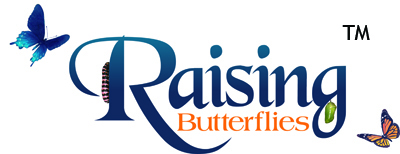Overwintering Techniques > Wine Coolers
These sensitive early stages include eggs, unfed first instar caterpillars, half-grown caterpillars, mature caterpillars, and adult butterflies; the last of which is THE most difficult to overwinter and not advisable unless you know what you're doing.
At the same time, shelf space in wine coolers comes at a premium as compared to using refrigerator space or your own backyard which are much easier and less expensive to provide. Therefore, it is overkill to overwinter chrysalids of those butterflies that naturally overwinter as pupa (including non-Parnassius swallowtails, some blues, some skippers, most pierids, etc.) in a wine cooler unless you already have plenty of extra space.
The immature stage of pupa is the least sensitive to desiccation of any other immature stage where the refrigerator technique works just fine and cannot desiccate a pupa unless the pupa was exposed to pathogens and became sick as a caterpillar. Also, it is easy to expose pupae to intermittent humidity using a refrigerator or outside as explained in their subsections.
Because there are four stages that complete butterfly metamorphosis, there are a possibility of four stages that temperate butterflies, based upon genus, overwinter which includes egg, caterpillar, chrysalis, and adult. The list below shows which butterfly groups (in some cases, genera) overwinter in these sensitive stages where a wine cooler can be extremely handy.
Eggs:
- Most species of copper butterflies (Genus: Lycaena)
- Some genera of hairstreak butterflies (Genus: Hypaurotis and Satyrium)
- Pine white butterflies (Neophasia menapia and Neophasia terlooti)
- Shasta blue butterfly (Plebejus shasta)
Unfed first instar caterpillars:
- Species of larger fritillaries (Genus: Speyeria)
- Species of wood nymph butterflies (Genus: Cercyonis)
- Wyoming satyr (Neominois wyomingo)
- Shasta blue butterfly (Plebejus shasta)
Half-grown caterpillars:
- Temperate zone checkerspots (Genera: Euphydryas, Chlosyne, Poladryas, etc.)
- Temperate zone crescentspots (Genera: Phyciodes, Anthanassa, etc.)
- Some checkered skippers (Pyrgus communis and Pyrgus albescens)
- Species of emperor butterflies (Genus: Asterocampa)
- Species of viceroy, true admiral, and purple hibernacula (Genus: Limenitis)
- Some species of copper butterflies including Lycaena cupreus and Lycaena phlaeus)
- Subspecies of the boisduval's blue( Plebejus icarioides)
Mature caterpillars:
- Temperate zone arctic and alpine butterflies (Genera: Oeneis, Erebia, Neominois, etc.)
- Spreadwing skippers (Genera: Pholisora and Hesperopsis)
- Grass feeding skippers (Genus: Amblyscirtes)
- Giant skippers (Genus: Megathymus)
- Mormon metalmark complex (Apodemia spp.)
- Subspecies of the boisduval's blue( Plebejus icarioides)
-
Koldfront Wine Cooler
There are many wine coolers to choose from. I use the Koldfront because of its relative inexpensive price point as well as it can support temperatures of 45°F which works well for eggs and larvae of many temperate zone butterflies.
-
Eggs and Caterpillars Overwintering in Wine cooler
Since wine coolers provide humidity, it is important that any container with eggs or larvae have ventilation so that the external humidity can enter your container.
-
Closeup
Overwintering hibernacula of the viceroy, eggs of the edith's copper, eggs of the Colorado hairstreak, mature larvae of the dreamy duskywing, half-grown larvae of the anicia checkerspot, etc.
-
Important Temperature and Humidity
To protect eggs and caterpillars from desiccation, it is important that the wine cooler temperature be set at around 45°Fwith a humidity set between 60 and 90 percent. Below 60 percent creates possible desiccation and above 90 percent creates concerns with mold. Whenever overwintering butterflies in any stage, you want to avoid these bookends. (These numbers are approximate depending upon temperature and humidity of the external environment.)
-
Hygrometer-Thermometer
In order to measure humidity and temperature, it is advisable to obtain a Hygrometer-Thermometer. One option is the brand shown below. Pet stores carry hydrometer-thermometers for reptile cages.


